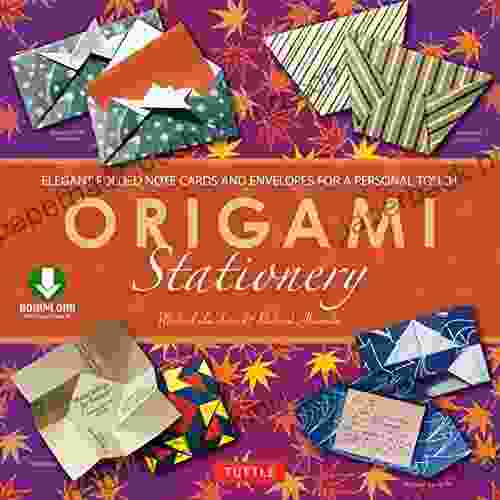Discover the Art of Fluid Painting: A Comprehensive Guide to Blending Colors

Fluid painting, also known as acrylic pouring, is a captivating art form that allows you to create mesmerizing artworks using liquid acrylic paints. One of the most important aspects of fluid painting is learning how to blend colors to achieve stunning effects.
5 out of 5
| Language | : | English |
| File size | : | 3942 KB |
| Text-to-Speech | : | Enabled |
| Screen Reader | : | Supported |
| Enhanced typesetting | : | Enabled |
| Print length | : | 8 pages |
| Lending | : | Enabled |
In this comprehensive guide, we will delve into the world of fluid painting and teach you everything you need to know about blending colors. Whether you're a beginner or an experienced artist, this guide will provide you with the knowledge and techniques to elevate your fluid painting skills.
Materials You'll Need
Before you start blending colors, it's important to gather the necessary materials. Here's what you'll need:
- Canvas or other painting surface
- Acrylic paints
- Pouring medium
- Cups or containers for mixing paints
- Stirring sticks
- Squeeze bottles or pipettes
- Gloves and apron (optional)
Choosing the Right Colors
The colors you choose will greatly impact the overall look of your fluid painting. When selecting colors, consider the following:
- Color harmony: Choose colors that complement each other and create a pleasing visual effect. Experiment with different color combinations to see what works best for you.
- Contrast: Using contrasting colors can create a sense of depth and excitement. Be sure to balance contrasting colors with harmonious colors to achieve visual harmony.
- Tints and shades: Tints are lighter versions of colors, while shades are darker versions. Using tints and shades can add depth and dimension to your painting.
Mixing Paints and Preparing Your Pour
Once you've chosen your colors, it's time to mix your paints and prepare your pour. Here's how:
- In a cup or container, mix your acrylic paint with pouring medium. The ratio of paint to pouring medium will vary depending on the consistency you want. For a thinner pour, use more pouring medium. For a thicker pour, use less pouring medium.
- Once the paint is mixed, add a stirring stick and stir until the mixture is smooth and free of lumps.
- Repeat steps 1 and 2 for each color you want to use.
- If you want to create cells in your painting, add a few drops of silicone oil to each cup of paint.
Pouring Techniques
There are many different pouring techniques you can use to create unique and interesting effects. Some popular techniques include:
- Straight pour: Pour the paint directly onto the canvas from a cup or squeeze bottle.
- Dirty pour: Mix two or more colors together in a cup before pouring them onto the canvas. This creates a marbled effect.
- Flip cup pour: Pour the paint into a cup, then flip the cup upside down onto the canvas. This creates a cell-like effect.
- Swipe pour: Pour the paint onto the canvas, then use a palette knife or other tool to swipe across the surface, creating swirling patterns.
Blending Colors
Now comes the fun part: blending colors! There are several ways to blend colors in fluid painting:
- Pour adjacent colors: Pour two or more colors side by side onto the canvas. As the paint flows, the colors will naturally blend together.
- Use a palette knife or spoon: Dip a palette knife or spoon into one color, then gently drag it across another color. This will create a smooth, blended effect.
- Tilt the canvas: Once you've poured the paint onto the canvas, tilt it in different directions to encourage the colors to blend and flow.
Drying and Finishing
Once you're happy with your painting, allow it to dry completely. The drying time will vary depending on the thickness of the paint and the environmental conditions.
Once the painting is dry, you can add finishing touches such as varnish or resin to protect the surface and enhance the colors.
Blending colors is an essential technique in fluid painting that allows you to create stunning and unique artworks. By experimenting with different colors, techniques, and blending methods, you can develop your own unique style and create beautiful paintings that will captivate the eye.
So what are you waiting for? Gather your materials, choose your colors, and start blending! The world of fluid painting is waiting for you to explore.
5 out of 5
| Language | : | English |
| File size | : | 3942 KB |
| Text-to-Speech | : | Enabled |
| Screen Reader | : | Supported |
| Enhanced typesetting | : | Enabled |
| Print length | : | 8 pages |
| Lending | : | Enabled |
Do you want to contribute by writing guest posts on this blog?
Please contact us and send us a resume of previous articles that you have written.
 Book
Book Novel
Novel Page
Page Chapter
Chapter Text
Text Story
Story Genre
Genre Reader
Reader Library
Library Paperback
Paperback E-book
E-book Magazine
Magazine Newspaper
Newspaper Paragraph
Paragraph Sentence
Sentence Bookmark
Bookmark Shelf
Shelf Glossary
Glossary Bibliography
Bibliography Foreword
Foreword Preface
Preface Synopsis
Synopsis Annotation
Annotation Footnote
Footnote Manuscript
Manuscript Scroll
Scroll Codex
Codex Tome
Tome Bestseller
Bestseller Classics
Classics Library card
Library card Narrative
Narrative Biography
Biography Autobiography
Autobiography Memoir
Memoir Reference
Reference Encyclopedia
Encyclopedia Maya Payne Smart
Maya Payne Smart Mo Gawdat
Mo Gawdat Shane Lambert
Shane Lambert Lana Wedmore
Lana Wedmore Tomasz Borowski
Tomasz Borowski George Monbiot
George Monbiot Scott A Mills
Scott A Mills Hildegarde Mahoney
Hildegarde Mahoney Tim Leffel
Tim Leffel Ronald Rompkey
Ronald Rompkey Warren St John
Warren St John Sara J Weis
Sara J Weis Roy Macskimming
Roy Macskimming Liz Nolley Tillman
Liz Nolley Tillman Pam Rosenberg
Pam Rosenberg Robert Coles
Robert Coles Laird Scranton
Laird Scranton Robert K Yin
Robert K Yin Laura Langston
Laura Langston Tim Bonyhady
Tim Bonyhady
Light bulbAdvertise smarter! Our strategic ad space ensures maximum exposure. Reserve your spot today!

 Larry ReedImmerse Yourself in the Captivating Depictions of the Marine World: "62 Color...
Larry ReedImmerse Yourself in the Captivating Depictions of the Marine World: "62 Color... Gus HayesFollow ·17.8k
Gus HayesFollow ·17.8k Jayson PowellFollow ·15.8k
Jayson PowellFollow ·15.8k Hassan CoxFollow ·17.7k
Hassan CoxFollow ·17.7k Scott ParkerFollow ·18.1k
Scott ParkerFollow ·18.1k Ryūnosuke AkutagawaFollow ·19.1k
Ryūnosuke AkutagawaFollow ·19.1k William PowellFollow ·3.2k
William PowellFollow ·3.2k Brent FosterFollow ·6.8k
Brent FosterFollow ·6.8k Francisco CoxFollow ·3.6k
Francisco CoxFollow ·3.6k

 E.M. Forster
E.M. ForsterBluewater Walkabout: Into the Pacific
An Unforgettable...

 Joseph Foster
Joseph FosterUnlock the Secrets of Standardized Test Success with Test...
Are you tired of struggling with standardized...

 Joe Simmons
Joe SimmonsUnlock Learning with Flash Cards for Kindergarten:...
Ignite a Passion for...

 Raymond Parker
Raymond ParkerJourney into the Enchanting World of "The Heart Kingdom"...
A Timeless Tale of Love,...
5 out of 5
| Language | : | English |
| File size | : | 3942 KB |
| Text-to-Speech | : | Enabled |
| Screen Reader | : | Supported |
| Enhanced typesetting | : | Enabled |
| Print length | : | 8 pages |
| Lending | : | Enabled |














